Welcome to the definitive guide on keyway machining, where precision meets performance. In this in-depth exploration, we will unravel the complexities of keyway machining, providing you with practical insights, expert tips, and real-world applications. Whether you're an engineer seeking mastery or an enthusiast eager to delve into the intricacies, this guide promises a thorough journey through the world of keyway machining.
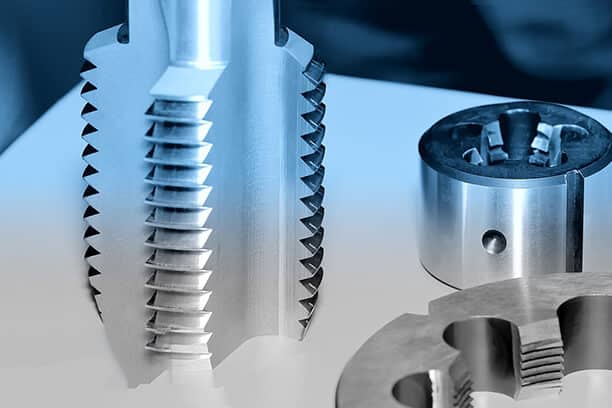
A keyway is a slot or groove machined into a component, typically a shaft or hub, to accommodate a key. This key serves to transmit torque between the shaft and a connected part, ensuring a secure and efficient mechanical connection. Keyways are ubiquitous in various industries, playing a pivotal role in the functionality of rotating machinery.
Keyways are not merely slots; they are the linchpins of mechanical precision. By preventing slippage and ensuring synchronized movement, keyways contribute to the seamless operation of machinery. In applications ranging from automotive transmissions to industrial equipment, understanding the role of keyways is fundamental to optimizing performance.
Table 1: Common Applications of Keyways
| Industry | Keyway Application |
|---|---|
| Automotive | Transmission systems, crankshafts, camshafts |
| Machinery | Gears, pulleys, couplings |
| Aerospace | Propeller shafts, landing gear components |
| Power Generation | Turbines, generators, gearbox components |
Understanding these applications sets the stage for a detailed exploration of keyway machining techniques.
Before delving into the machining process, meticulous preparations are crucial. Gather the necessary tools, including milling cutters or cutting tools suitable for the material. Additionally, ensure a well-ventilated workspace and the use of personal protective equipment (PPE) to guarantee operator safety.
CNC Milling is a widely used method for keyway machining due to its precision and versatility. The process involves carefully removing material to create the keyway shape. Utilizing a milling machine with a suitable cutter, follow these steps for precise milling:
Secure the Workpiece: Ensure the workpiece is securely clamped to prevent movement during machining.
Select the Right Cutter: Choose a milling cutter appropriate for the keyway dimensions and material.
Set the Speed and Feed: Optimize the milling machine's speed and feed rates for efficient material removal.
Initial Cuts: Begin with shallower cuts, gradually increasing the depth to achieve the desired keyway dimensions.
Deburring: After milling, deburr the edges to ensure a smooth and clean finish.
Table 2: Recommended Milling Parameters
| Material | Cutter Type | Speed (RPM) | Feed Rate (in/min) |
|---|---|---|---|
| Steel | HSS or Carbide | 500 - 1000 | 10 - 30 |
| Aluminum | Carbide | 1000 - 3000 | 20 - 50 |
| Cast Iron | HSS or Carbide | 300 - 700 | 8 - 20 |
In addition to milling, cutting is a viable method for keyway machining. Cutting tools, such as broaches or slitting saws, offer distinct advantages in certain applications. The process involves removing material incrementally to form the keyway. Let's explore the step-by-step guide for cutting keyways:
Selecting the Cutting Tool: Choose the appropriate cutting tool based on the keyway dimensions and material.
Workpiece Clamping: Securely clamp the workpiece to prevent any movement during the cutting process.
Setting Parameters: Adjust the cutting tool's speed, feed, and depth parameters according to the material being machined.
Incremental Cutting: Make successive cuts to achieve the final keyway shape, periodically clearing chips for optimal results.
Post-Cutting Inspection: Inspect the keyway for accuracy, ensuring it meets the specified dimensions and tolerances.
Table 3: Recommended Cutting Tools for Keyway Machining
| Material | Cutting Tool Type | Speed (RPM) | Feed Rate (in/min) |
|---|---|---|---|
| Stainless Steel | Broach | 50 - 200 | 5 - 15 |
| Brass | Slitting Saw | 500 - 1000 | 15 - 30 |
| Plastics | Single Point Cutter | 1000 - 3000 | 30 - 60 |
While milling and cutting are conventional methods, alternative approaches may be suitable for specific applications. For instance, electrical discharge machining (EDM) or abrasive water jet machining offers unique advantages in certain scenarios. Let's delve into these unconventional methods:
EDM involves the use of electrical sparks to erode material, creating intricate shapes with high precision. This method is particularly useful for hard or heat-sensitive materials.
Advantages of EDM for Keyway Machining:
Ability to machine complex shapes with high precision.
Suitable for materials with high hardness or heat sensitivity.
Considerations:
Slower machining speed compared to traditional methods.
Initial setup may be time-consuming.
Abrasive water jet machining utilizes a high-pressure stream of water mixed with abrasive particles to cut through materials. This method is advantageous for its versatility and minimal heat generation.
Advantages of Abrasive Water Jet Machining for Keyway Machining:
Minimal heat-affected zone, suitable for heat-sensitive materials.
No tool wear, allowing for consistent results over time.
Considerations:
Surface finish may require additional processing.
Initial equipment cost may be higher.
These alternative methods provide valuable options depending on the specific requirements of your keyway machining project. Understanding their advantages and considerations empowers you to make informed decisions.
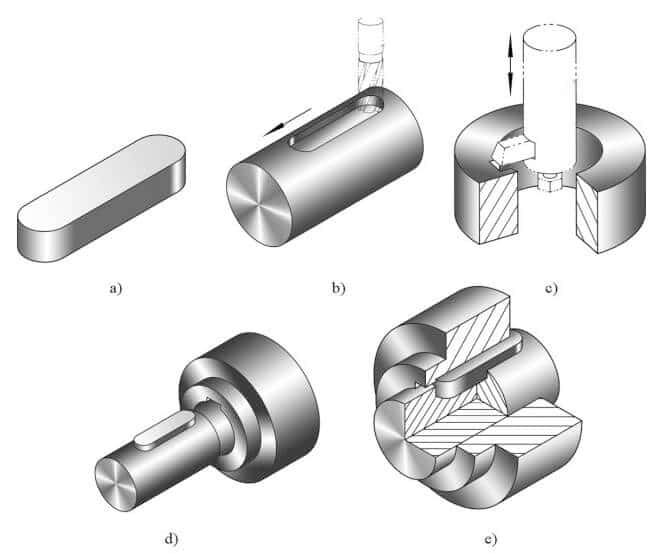
Milling and cutting are two primary methods for keyway machining, each with its advantages and considerations. A comparative analysis will guide you in choosing the most suitable technique for your application.
Advantages:
High precision and repeatability.
Suitable for a wide range of materials.
Versatility in creating different keyway shapes.
Considerations:
Longer machining time compared to cutting.
Initial equipment cost may be higher.
Advantages:
Faster material removal.
Suitable for high-volume production.
Less initial equipment investment.
Considerations:
Lower precision compared to milling.
Limited versatility in shaping complex keyways.
Keyways come in various shapes, each serving a specific purpose. Tailoring your machining approach to the desired shape is essential for optimal performance. Let's explore key considerations for machining different keyway shapes:
Straight keyways are the most common and straightforward. When machining straight keyways, precision is paramount. Ensure proper alignment and fixturing to achieve a straight, uniform cut.
Considerations:
Use a straight-tooth milling cutter for simplicity and efficiency.
Regularly inspect and measure the keyway to maintain straightness.
Tapered keyways are often employed in applications requiring a gradual engagement. Achieving a precise taper involves specialized tooling and meticulous machining parameters.
Considerations:
Select a tapered milling cutter or specialized cutting tool for accuracy.
Pay attention to the angle and depth to achieve the desired taper.
Involute keyways feature a complex curved shape, providing smooth engagement. Milling is often the preferred method for machining involute keyways due to its ability to create intricate contours.
Considerations:
Choose a milling cutter with the appropriate profile to create the involute shape.
Ensure precise control over the milling machine's movements for accuracy.
Understanding the nuances of machining specific keyway shapes allows you to tailor your approach to the unique requirements of each application.

In the automotive industry, keyways play a vital role in ensuring the seamless operation of crucial components. One prominent application is in transmission systems, where keyways are machined into shafts to secure gears and synchronize rotational movements. This precise engagement is essential for smooth gear shifts and overall transmission efficiency.
Keyways are intricately machined into crankshafts and camshafts to facilitate the precise timing of engine events. The accurate alignment of these keyways is critical for maintaining optimal engine performance and fuel efficiency.
Table 4: Keyway Specifications for Automotive Components
| Component | Keyway Dimensions | Material |
|---|---|---|
| Transmission Gears | Straight, 6mm width, 30mm length | Alloy Steel |
| Crankshafts | Involute, 8° taper, 40mm length | Forged Steel |
| Camshafts | Straight, 4mm width, 25mm length | Ductile Iron |
In the machinery manufacturing sector, keyway machining is prevalent in ensuring the proper functioning of various components. Gears, pulleys, and couplings often incorporate keyways to secure their connection to shafts, preventing slippage and ensuring efficient power transmission.
Gearbox assemblies rely heavily on precisely machined keyways to maintain synchronization between gears. Keyways in gearbox components ensure that rotational forces are efficiently transferred, contributing to the overall reliability and longevity of the system.
Table 5: Keyway Specifications for Machinery Components
| Component | Keyway Dimensions | Material |
|---|---|---|
| Gears | Straight, 5mm width, 20mm length | Alloy Steel |
| Pulleys | Involute, 10° taper, 35mm length | Cast Iron |
| Couplings | Straight, 6mm width, 25mm length | Stainless Steel |
In the aerospace industry, where precision and reliability are paramount, keyway machining finds applications in critical components such as propeller shafts and landing gear mechanisms.
Propeller shafts in aircraft engines incorporate precisely machined keyways to ensure the accurate and synchronized rotation of the propeller. This level of precision is essential for maintaining stability and efficiency during flight.
Table 6: Keyway Specifications for Aerospace Components
| Component | Keyway Dimensions | Material |
|---|---|---|
| Propeller Shafts | Straight, 4mm width, 15mm length | Titanium Alloy |
Within the realm of power generation, keyway machining is instrumental in the manufacturing of turbines, generators, and other critical components.
Turbine blades, essential components in power generation, often feature intricately machined keyways. These keyways ensure the secure attachment of blades to the turbine rotor, enabling the efficient conversion of kinetic energy into electricity.
Table 7: Keyway Specifications for Power Generation Components
| Component | Keyway Dimensions | Material |
|---|---|---|
| Turbine Blades | Involute, 8° taper, 25mm length | High-Temperature Alloy |
Understanding these real-world applications showcases the diverse and indispensable role of keyway machining across different industries. The specific requirements for keyway dimensions and materials vary, emphasizing the need for precision in each application.
Safety is paramount in any machining operation, and keyway machining is no exception. Implementing effective safety measures is essential to protect operators and ensure the integrity of the machining process.
Personal Protective Equipment (PPE): Mandate the use of appropriate PPE, including safety glasses, gloves, and hearing protection, to safeguard against potential hazards.
Machine Guarding: Ensure machines are equipped with proper guards to prevent operator contact with moving parts during keyway machining.
Workspace Ventilation: Adequate ventilation is crucial, especially when machining materials that may produce fumes or particles. Implement local exhaust ventilation systems where necessary.
Training and Awareness: Provide comprehensive training for operators on keyway machining equipment, emphasizing the importance of safety protocols and awareness.
Emergency Stop Procedures: Clearly communicate and practice emergency stop procedures, allowing operators to react swiftly to any unforeseen issues during the machining process.
Maintaining high-quality standards in keyway machining is fundamental to ensuring the reliability and functionality of the final components. Adhering to industry-recognized standards and implementing best practices is key to achieving consistent and precise results.
Dimensional Accuracy: Regularly inspect keyway dimensions using precision measuring tools to ensure compliance with specified tolerances.
Surface Finish: Achieve a smooth surface finish by optimizing machining parameters and employing suitable cutting tools, reducing the risk of stress concentrations.
Material Compatibility: Consider the material properties when selecting machining tools and parameters, ensuring compatibility to prevent issues such as tool wear or material deformation.
Post-Machining Inspection: Conduct thorough inspections post-machining to identify any defects, irregularities, or deviations from the specified design.
Table 8: Keyway Machining Quality Parameters
| Quality Parameter | Specification |
|---|---|
| Dimensional Accuracy | ±0.05mm for critical dimensions |
| Surface Finish | Ra 0.8μm for smooth engagement surfaces |
| Material Compatibility | Tools selected based on material hardness |
| Inspection Frequency | After every keyway machining operation |
Despite meticulous planning, keyway machining may encounter challenges resulting in quality issues. Identifying these issues promptly and implementing corrective measures is essential to maintaining the integrity of the machined components.
Chattering During Milling: Adjust milling parameters, such as speed and feed rates, to minimize vibrations and chattering. Consider using anti-chatter devices.
Tool Wear: Monitor tool wear regularly and replace worn-out tools promptly to maintain precision and prevent damage to the workpiece.
Surface Roughness: Optimize cutting parameters and tool selection to achieve the desired surface finish. Consider secondary processes like polishing if necessary.
Misalignment of Keyway: Ensure proper alignment and fixturing of the workpiece to prevent misalignment issues during machining.
By addressing these common quality issues, you can enhance the overall reliability and functionality of machined keyways.
Efficiency in keyway machining is essential for optimizing production processes and minimizing costs. Implementing practical tips and considerations can significantly contribute to achieving these objectives.
Toolpath Optimization: Analyze and optimize toolpaths to reduce non-cutting time, enhancing overall machining efficiency.
Multi-Tool Machining: Explore the use of multi-tool machining strategies, such as utilizing multiple cutting tools simultaneously, to accelerate the machining process.
High-Speed Machining (HSM): When applicable, consider HSM techniques to increase cutting speeds and reduce machining time.
Fixture Design: Invest in well-designed fixtures that allow for quick and secure workpiece clamping, minimizing setup time and increasing overall efficiency.
Table 9: Strategies for Efficient Keyway Machining
| Efficiency Strategy | Implementation Steps |
|---|---|
| Toolpath Optimization | Utilize CAM software to analyze and optimize toolpaths. |
| Multi-Tool Machining | Incorporate tool changers into machining setups. |
| High-Speed Machining (HSM) | Ensure machine capabilities and select appropriate tooling. |
| Fixture Design | Collaborate with design engineers to develop efficient fixtures |
Designing effective keyways requires consideration of various factors to ensure optimal performance and longevity. Understanding these factors is crucial for tailoring keyway designs to specific application requirements.
Torque Transmission: Calculate the required torque transmission capacity to determine the appropriate keyway dimensions for the intended application.
Material Properties: Select materials with suitable hardness and wear resistance to withstand the specific operational conditions.
Environmental Conditions: Consider factors such as temperature, humidity, and exposure to corrosive elements when choosing materials and coatings for keyway components.
Dynamic Loading: Assess dynamic loading conditions, including start-stop cycles and variable loads, to design keyways capable of withstanding varying operational stresses.
By carefully addressing these considerations in the keyway design phase, you can enhance the overall reliability and performance of machined components.
As we conclude this comprehensive guide to keyway machining, it's imperative to revisit key insights and emphasize the critical role precision plays in mechanical engineering. From understanding the fundamental concepts of keyways to exploring advanced machining techniques, we've delved into the intricacies of this crucial process.
Precision is Paramount: Keyway machining is not merely a mechanical process; it is an art that demands precision. Achieving accurate dimensions and high-quality finishes ensures the seamless operation of keyways in various applications.
Diverse Applications: From automotive transmissions to aerospace components, keyway machining finds applications across diverse industries, underscoring its universal importance in mechanical systems.
Safety and Quality Go Hand in Hand: Implementing robust safety measures is as essential as maintaining high-quality standards. This ensures the well-being of operators and the reliability of machined components.
The world of keyway machining continues to evolve with technological advancements and innovative approaches. As we look to the future, several trends and developments are shaping the landscape:
Advanced Materials: The emergence of new materials with enhanced properties presents opportunities for improving keyway performance in terms of durability and wear resistance.
Digital Twin Technology: Integrating digital twin technology allows for virtual simulations of keyway machining processes, optimizing toolpaths and minimizing trial-and-error approaches.
Industry 4.0 Integration: The integration of Industry 4.0 principles, such as IoT sensors and data analytics, provides real-time insights into machining processes, facilitating predictive maintenance and continuous improvement.
In embracing these trends, the field of keyway machining stands at the forefront of innovation, promising greater efficiency, precision, and reliability in mechanical systems.
As you embark on your keyway machining endeavors, remember that mastery in this field requires a blend of theoretical knowledge, hands-on experience, and a commitment to continuous learning. Precision is not just a goal; it's a journey, and this guide serves as your roadmap.
Feel free to revisit specific sections or use this guide as a reference in your machining projects. Precision awaits at the intersection of knowledge and practice, and you are now equipped to navigate this intersection with confidence.
Your journey to unlock precision in keyway machining begins here. Safe and precise machining!
As we wrap up, if you're on the lookout for top-notch precision machining, I'd suggest checking out Richconn. They're a seasoned player in the field, specializing in CNC machining services. Richconn's dedication to quality and knack for cutting-edge technology make them a go-to for precision manufacturing needs.
If you're curious to delve deeper into what they offer, take a stroll through Richconn's official website. Their commitment to excellence might just be the missing piece your project needs. For an effortless journey into precision engineering, consider giving Richconn a closer look.
Here's to seamless precision in your endeavors, and Richconn might just be the partner you've been searching for.
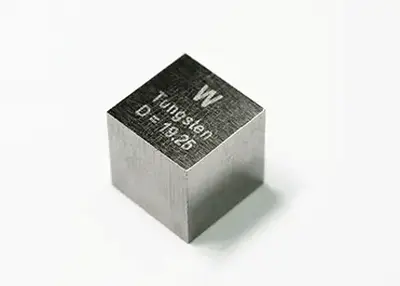 Machining Tungsten Guide: Can Tungsten be Machined?November 13, 2023Welcome to the cutting-edge world of machining tungsten, where precision meets excellence. As the forefront player in CNC machining, Richconn is here to unravel the intricacies of working with tungsten, answering the pivotal question: Can tungsten be machined?view
Machining Tungsten Guide: Can Tungsten be Machined?November 13, 2023Welcome to the cutting-edge world of machining tungsten, where precision meets excellence. As the forefront player in CNC machining, Richconn is here to unravel the intricacies of working with tungsten, answering the pivotal question: Can tungsten be machined?view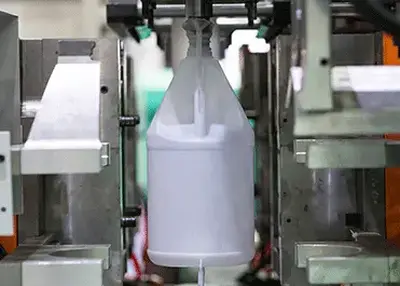 Extrusion Blow Molding: A Guide to the Process, Materials, and ApplicationsDecember 5, 2023Extrusion blow molding is a process of forming hollow plastic parts by extruding a molten tube of polymer and inflating it with air inside a mold. It is one of the most common and versatile methods of producing plastic containers, such as bottles, jars, jugs, and drums.view
Extrusion Blow Molding: A Guide to the Process, Materials, and ApplicationsDecember 5, 2023Extrusion blow molding is a process of forming hollow plastic parts by extruding a molten tube of polymer and inflating it with air inside a mold. It is one of the most common and versatile methods of producing plastic containers, such as bottles, jars, jugs, and drums.view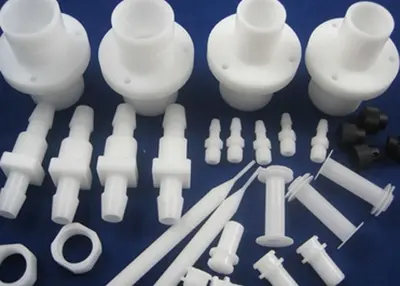 Safety Issues in CNC Turning TechnologyApril 25, 2023Turning is a part of mechanical processing in lathe machining. Lathe machining mainly uses the turning tool to process the rotating workpiece. Lathes are mainly used to process shafts, discs, sleeves,...view
Safety Issues in CNC Turning TechnologyApril 25, 2023Turning is a part of mechanical processing in lathe machining. Lathe machining mainly uses the turning tool to process the rotating workpiece. Lathes are mainly used to process shafts, discs, sleeves,...view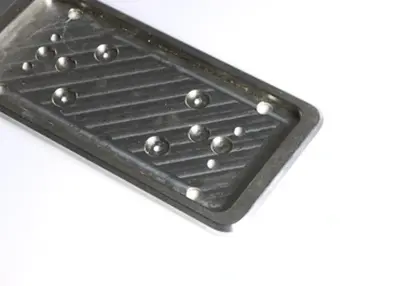 The Comprehensive Guide to Sheet Metal Thickness Gauge 2024January 22, 2024What is metal gauge thickness? This article explains everything you need to know about the use of sheet metal gauge thickness.view
The Comprehensive Guide to Sheet Metal Thickness Gauge 2024January 22, 2024What is metal gauge thickness? This article explains everything you need to know about the use of sheet metal gauge thickness.view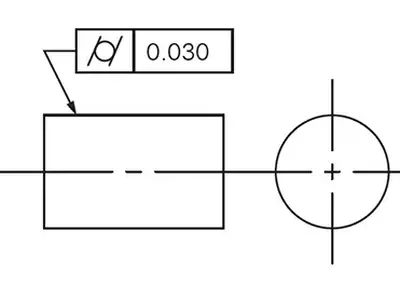 Unlocking Precision: Mastering Cylindricity for Engineering ExcellenceNovember 21, 2023In the intricate world of engineering, precision reigns supreme. Enter the realm of cylindricity - a fundamental attribute dictating the perfection of cylindrical forms. Here, I guide you through an explorative journey, unveiling the essence of cylindricity, its nuanced applications in GD&T (Geometric Dimensioning and Tolerancing), and the crucial methods to measure and comprehend this vital parameter.view
Unlocking Precision: Mastering Cylindricity for Engineering ExcellenceNovember 21, 2023In the intricate world of engineering, precision reigns supreme. Enter the realm of cylindricity - a fundamental attribute dictating the perfection of cylindrical forms. Here, I guide you through an explorative journey, unveiling the essence of cylindricity, its nuanced applications in GD&T (Geometric Dimensioning and Tolerancing), and the crucial methods to measure and comprehend this vital parameter.view 2024 China (Shenzhen) International Industrial Parts Exhibition (CIIPES-2024)January 3, 2024Exhibition OverviewIn order to further enhance the development of the industrial parts industry, fully display the cutting-edge equipment technology of the industrial parts industry, actively promote ...view
2024 China (Shenzhen) International Industrial Parts Exhibition (CIIPES-2024)January 3, 2024Exhibition OverviewIn order to further enhance the development of the industrial parts industry, fully display the cutting-edge equipment technology of the industrial parts industry, actively promote ...view